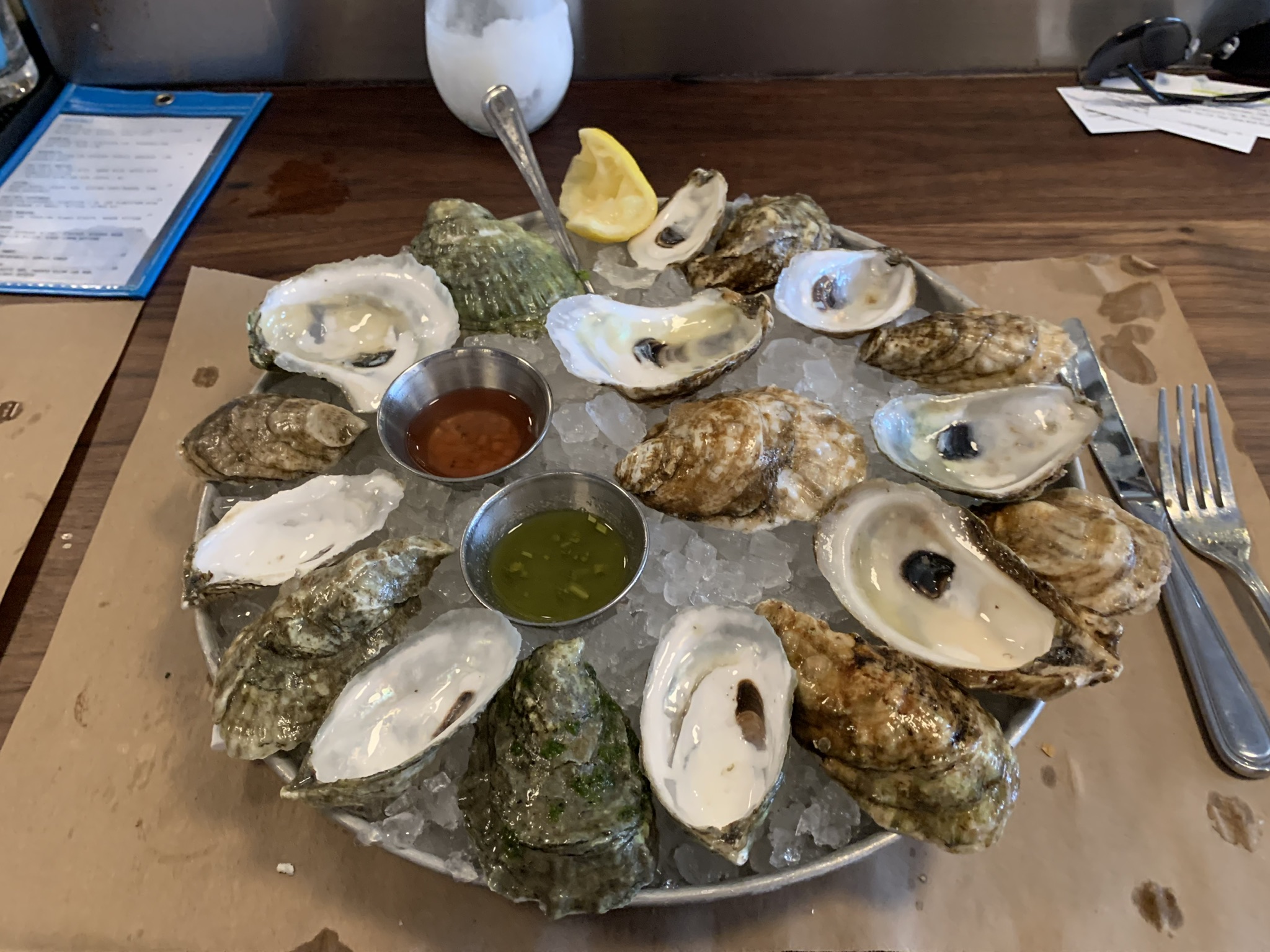Get To Know Your Oyster

Oyster History
We've compiled a summary of the history of oysters through time...
Triassic period
Scientists (zoologists) believe that the first oyster appeared in the Triassic period (over 200 million years ago), when dinosaurs ruled the earth. Fossil records show that the oyster dates to 145 million years ago.
This means that oysters have been around since the start of humanity...
Mesolithic period
How did people first open oysters? Like us, you may think that people from the Mesolithic period collected oysters at low tide; bashed the oysters with a rock; prised the shells apart, and scooped out the meat.
However, archaeological evidence shows that most oyster shells from the Mesolithic period are undamaged by rocks or tools; but do show traces of scorch marks consistent with fire. This suggests that the oysters were placed on the embers of a fire or heated stones, and then cooked for a few minutes until the oyster shells popped open.
Roman times
Since Roman times (over 2,000 years ago), the Native Oyster (also called the 'European' Oyster or 'Flat' Oyster) has been fished from UK waters such as, Whitstable Bay, Kent; the Blackwater River Estuary, Essex; and the Fal River Estuary, Cornwall.
Native Oysters were very popular in Roman times.
Native Oyster shells are commonly found in Roman archaeological sites, such as villas, towns and forts from the south of England to as far north as Hadrian's Wall.
After the Romans left, over time, the oyster lost its status as a delicacy.
8th to 16th century
Between the 8th and 16th centuries, the oyster became popular with the rich and poor alike. Oysters were often cooked in their liquor (the small pool of clear seawater found in the oysters' cupped shells) with a splash of ale and black pepper.
He was a bold man that first ate an oyster
Famous satirist, essayist, poet and author Jonathon Swift (1667 to 1745) once said: "He was a bold man that first ate an oyster."
Swift overcame his fear of oysters to become a convert and enthusiastic advocate of oysters...
In Swift's most famous book 'Gulliver's Travels' (1726); the main character and ship's captain 'Gulliver' became shipwrecked and landed at a place called Lilliput, where he collected and ate raw oysters on the beach in order to conserve his food provisions.
Swift even penned instructions on how to boil oysters: "Take oysters, wash them clean that is wash their shells clean, then put the oysters into an earthen pot, with their hollow sides down, then put this pot into a kettle of water, and so let them boil. Your oysters are boiled in their own liquor, and not mixed with water."
17th to 18th century
In the 17th and 18th centuries, oysters were used in many varied dishes. Smaller oysters were often eaten raw, and larger oysters were often used in stews or cooked in pies. Oysters were used with pork or mutton to make sausages. Oysters were stuffed inside fowl, such as turkey or duck, and then roasted; and the oysters' liquor would be poured over the fowl!
Oysters were also pickled for transport to inland towns.
19th to 20th century
In the 19th century, oysters were plentiful and cheap; and were sold on almost every street corner in London. Oysters were very popular with the lower class who used oysters as a substitute for expensive beef in stews and soups. One of the most popular Victorian dishes with the lower class was oyster pie.
By the mid 19th century oysters were fished on a massive scale. In the year 1864, over 700 million oysters were consumed in London alone; and oyster fisheries employed around 120,000 people across the UK.
By the mid 20th century, oysters became over-fished, and natural oyster stocks became desperately low. In the year 1964, only 3 million oysters were fished from UK waters. In 1965, the robust Pacific Oyster (native to Japan's Pacific coast) was introduced to UK waters by the UK government under quarantine to replace the low stocks of the UK Native Oyster.
Today
The abundant Pacific Oyster, the seasonal Native Oyster, and the lesser known Kumamoto Oyster are cultivated and sustainably harvested by licensed oyster farms and fisheries, under strict UK laws. In the UK, the Pacific Oyster represents about 98% of the oysters harvested for sale.
Oysters are considered a luxury food...
Oysters are enjoyed by people at oyster bars, restaurants, hotels, work, home, and pretty much anywhere. Oysters are very popular at functions, events, parties, and other special occasions.
Oyster festivals are held in the UK and worldwide to celebrate the oyster. These oyster festivals (usually held annually or bi-annually) are attended by tens of thousands of people who enjoy fresh oysters; as well as live music and entertainment, local foods and drinks. The world's oldest oyster festival is Galway International Oyster Festival (established 1954), and is held on the last weekend of September in the City of Galway, Ireland.
https://simplyoysters.com/oyster-history






